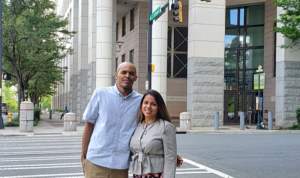 Remember the music from the early 2000s? And how endless debates about which boy band was the best or who was a better performer between Britney Spears and Christina Aguilera filled our ears. Then, there were many one-hit wonders like Vitamin C who released Graduation (Friends Forever). Below is an excerpt from the lyrics:
Remember the music from the early 2000s? And how endless debates about which boy band was the best or who was a better performer between Britney Spears and Christina Aguilera filled our ears. Then, there were many one-hit wonders like Vitamin C who released Graduation (Friends Forever). Below is an excerpt from the lyrics:
“As we go on/We remember/All the times we/Had together/And as our lives change/Come whatever/We will still be/Friends forever.”




 On August 26th Women’s Equality Day is celebrated. Initially chosen in commemoration of the passing of the 19th Amendment that enshrined a woman’s right to vote, Women’s Equality Day has become a yearly celebration of the history of woman’s suffrage as well as a “pledge to continue fighting for equality for women and girls.”
On August 26th Women’s Equality Day is celebrated. Initially chosen in commemoration of the passing of the 19th Amendment that enshrined a woman’s right to vote, Women’s Equality Day has become a yearly celebration of the history of woman’s suffrage as well as a “pledge to continue fighting for equality for women and girls.”

 I first learned about the issues that can arise with the over-consumption of alcohol in a freshmen seminar in college. Before that, I had no formal introduction or training on the negative consequences that can result from drinking and driving. Driving Under the Influence (DUI) and Driving While Impaired (DWI) are increasingly becoming a national issue. According to the National Highway Traffic Safety Administration (NHTSA), “Every day, almost 30 people in the United States die in drunk-driving crashes — that’s one person every 48 minutes in 2017.”1 People who are proven guilty of DUI/DWI can then end up in treatment courts.
I first learned about the issues that can arise with the over-consumption of alcohol in a freshmen seminar in college. Before that, I had no formal introduction or training on the negative consequences that can result from drinking and driving. Driving Under the Influence (DUI) and Driving While Impaired (DWI) are increasingly becoming a national issue. According to the National Highway Traffic Safety Administration (NHTSA), “Every day, almost 30 people in the United States die in drunk-driving crashes — that’s one person every 48 minutes in 2017.”1 People who are proven guilty of DUI/DWI can then end up in treatment courts. courts, I decided to highlight a person whose work is beneficial to the practices and procedures of treatment courts.
courts, I decided to highlight a person whose work is beneficial to the practices and procedures of treatment courts.  with the local Vet Center to start a group called The Sword and the Pen. Initially, we met every other Thursday and by October of 2017, prior to my moving to DC to pursue a graduate degree, we were meeting every week, rain or shine.
with the local Vet Center to start a group called The Sword and the Pen. Initially, we met every other Thursday and by October of 2017, prior to my moving to DC to pursue a graduate degree, we were meeting every week, rain or shine.